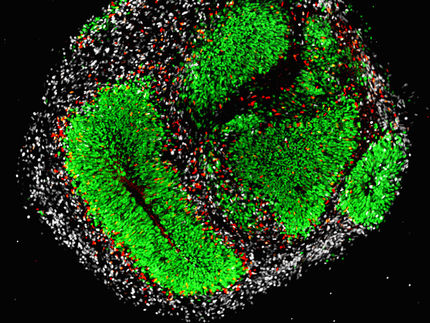Salt-loving microbe provides new enzymes for the production of next-gen biofuels
In order to realize the full potential of advanced biofuels that are derived from non-food sources of lignocellulosic biomass — e.g., agricultural, forestry, and municipal waste, and crops such as poplar, switchgrass and miscanthus — new technologies that can efficiently and cost-effectively break down this biomass into simple sugars are required. Existing biomass pretreatment technologies are typically derived from the pulp and paper industry and rely on dilute acids and bases to break down the biomass. The treated biomass product is then exposed to biological catalysts, or enzymes, to liberate the sugars.
A new class of solvents, referred to as ionic liquids, have been reported to be much more efficient in treating the biomass and enhancing the yield of sugars liberated from it. While ionic liquids are useful for breaking down biomass, they can also hinder the ability of the cellulases (usually derived from fungi) used to produce sugars after pretreatment. Ionic liquids are a liquid form of salt that will inactivate enzymes by interfering with the folding of polypeptides—the building-blocks of proteins. To help identify new enzymes that are tolerant of ionic liquids, researchers from the U.S. Department of Energy (DOE) Joint Genome Institute (JGI) and the Joint BioEnergy Institute (JBEI) at DOE's Lawrence Berkeley National Laboratory are turning to those found in the complete genome sequences of halophilic (salt-tolerant) organisms.
As a test of this bioenergy-related application of DNA sequencing and enzyme discovery, researchers led by the Director of the DOE JGI, Eddy Rubin, and the Vice-President of the JBEI Deconstruction Division, Blake Simmons, employed a cellulose-degrading enzyme from a salt-tolerant microbe that was isolated from the Great Salt Lake. The microbe in question, Halorhabdus utahensis, is from the branch of the tree of life known as Archaea; H. utahensis was isolated from the natural environment at the Great Salt Lake and sequenced at the DOE JGI as part of the Genomic Encyclopedia of Bacteria and Archaea (GEBA) project.
"This is one of the only reports of salt-tolerant cellulases, and the only one that represents a true 'genome-to-function' relevant to ionic liquids from a halophilic environment," said Simmons of the study published June 30, 2011 in Green Chemistry. "This strategy enhances the possibility of identifying true obligatory halophilic enzymes." Such salt-tolerant enzymes, particularly cellulases, offer significant advantages for industrial utility over conventional enzymes.
In collaboration with Jerry Eichler from Ben Gurion University of the Negev in Israel they cloned and expressed a gene from H. utahensis in another haloarchaeal microbe, and were able to identify a salt-dependent enzyme that can tolerate high temperatures and is resistant to ionic liquids. "This project has established a very important link between genomic science and the realization of enzymes that can handle very demanding chemical environments, such as those present in a biorefinery," said Simmons.
The group plans to expand this research to develop a full complement of enzymes that is tailored for the ionic liquid process technology with the goal of demonstrating a complete biomass-to-sugar process, one they hope can enable the commercial viability of advanced biofuels.
Other news from the department science

Get the life science industry in your inbox
By submitting this form you agree that LUMITOS AG will send you the newsletter(s) selected above by email. Your data will not be passed on to third parties. Your data will be stored and processed in accordance with our data protection regulations. LUMITOS may contact you by email for the purpose of advertising or market and opinion surveys. You can revoke your consent at any time without giving reasons to LUMITOS AG, Ernst-Augustin-Str. 2, 12489 Berlin, Germany or by e-mail at revoke@lumitos.com with effect for the future. In addition, each email contains a link to unsubscribe from the corresponding newsletter.




















































